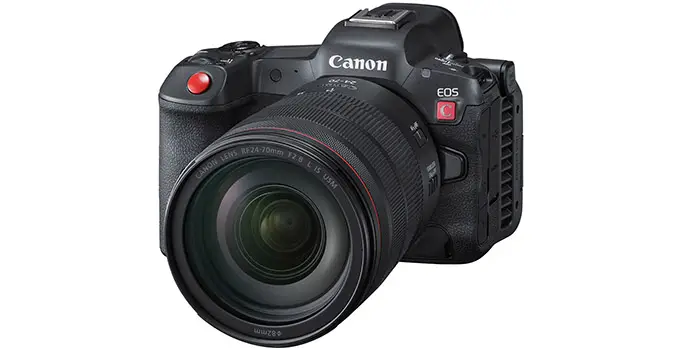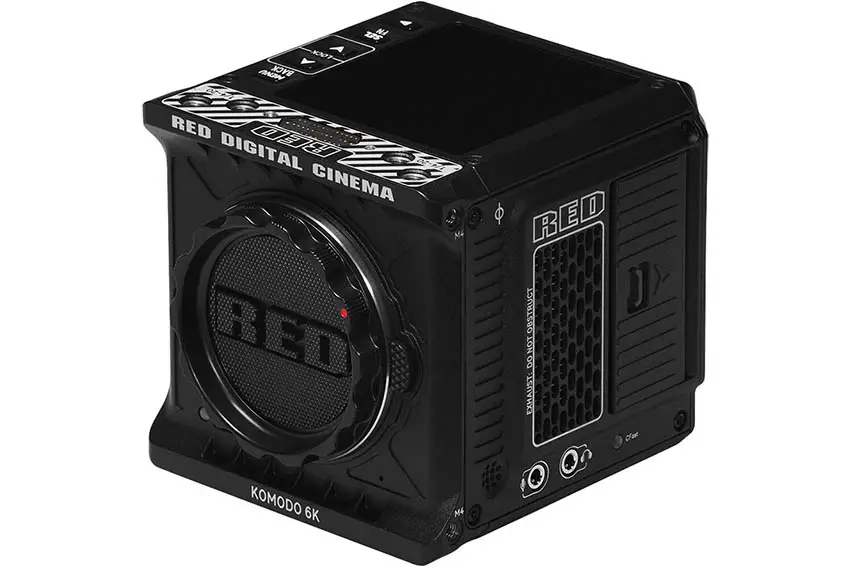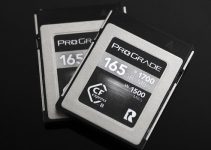Is it possible that a hybrid mirrorless camera like the Canon EOS R5 C can directly challenge cinema cameras like the RED KOMODO? That seems to be the case. These two cameras have different feature sets that many interested parties will want to compare.
For example, the R5 C will do 8K with its full-frame sensor while the KOMODO shoots 6K at Super 35 – that’s a fairly dramatic difference. Filmmaker Spenser Sakurai has a KOMODO and recently acquired an R5 C for testing so if you are trying to decide where to put your hard-earned money you would benefit from checking this out.
Arguably both of these cameras are going after the same market and even happen to share the Canon RF mount. Let’s run down the basic specs of each.
RED KOMODO:
- 6K Super 35mm Global Shutter CMOS Sensor
- REDRAW at up to 6K 40p
- Price: $6,000
Canon R5 C:
- 8K Full-Frame CMOS Sensor
- Canon RAW up to 8K 30p
- Price: $4,500
For testing, he tossed on a Meike 50mm T2.1 FF Prime Lens and set up a shot in his kitchen. With the windows in the background it was able to show off some of the HDR capabilities of each camera.
He also used the compressed codecs at 4K resolution, which were ProRes 422 HQ on the RED and XF-AVC on the Canon. Both were shot in log and then corrected to Rec.709.

Image Credit: Canon
There are some dramatic color differences between the two. When converted to Rec.709 the KOMODO tends to lean a bit green which has been common with RED cameras while the R5 C looks very neutral. Both cameras do look very clean having been shot at their native sensitivities and benefitting from downsampling from the full pixel readout.
Next were the raw tests. The Canon R5 C can be intimidating because of the extremely high data rates in 8K raw. Part of this has to do with RED’s monopoly on internal compressed raw recording, which means that REDRAW is way smaller and still has top-notch quality. Even Canon’s 8K LT option is over three times what you would get from RED’s MQ setting.

Image Credit: RED
Full-res raw files do tend to show a little more noise. A little bit of noise reduction goes a long way and cleans things up quite nicely.
You will also notice that Canon is a bit more lifted in the shadows while RED opts for a much more contrasty look with deeper shadows. Raw elevates the quality of both cameras and if you have shoots that don’t call for it their compressed options look very good.
Overall, the R5 C looks incredibly good, even when compared side-by-side with a true cinema camera that costs a fair bit more. Spenser thinks its a great option and it benefits from a full-frame sensor that features Dual Gain Output tech for better low-light performance.
From these early tests which camera would you pick out?
[source: Spenser Sakurai]
Order Links:
- Canon EOS R5 C Mirrorless Cinema Camera (B&H)
- RED KOMODO 6K Cinema Camera (B&H)
- Meike 50mm T2.1 FF Prime Lens (B&H)
Disclaimer: As an Amazon Associate partner and participant in B&H and Adorama Affiliate programmes, we earn a small comission from each purchase made through the affiliate links listed above at no additional cost to you.


